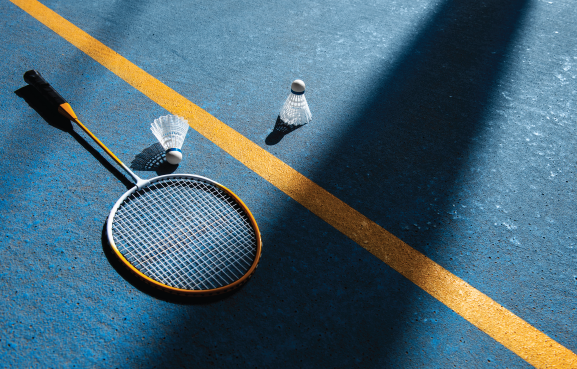
Badminton is widely known among Indonesians because the country has made many achievements in this sport. Since the 1992 Olympics, there has only been one Olympics in which Indonesian badminton athletes did not win any medal, and it was the 2012 Olympics in London. However, not all Indonesian people are familiar with the rules of this sport, especially those who are not into badminton tournaments.
If you don't know the two differences between the badminton rules for singles and doubles, let's read the rest of this article to find out the answer!
Badminton is a small ball sport that uses a racket and shuttlecock on a court measuring 13.4m x 6.1m. To score a point, a player must hit the shuttlecock so that it passes through the net in the middle of the court and falls into the opponent's playing area.
One set of badminton matches consists of 21 points, with a mandatory difference of 2 points to decide the winner of the set. If the score of both players reaches 20 points, the set continues until one player first gets 30 points to be the winner of the set. If each player has won one set, there will be an additional set to decide the winner of the match in that round.
Badminton is divided into 5 disciplines based on the player configuration, namely the men's singles, women's singles, men's doubles, women's doubles, and mixed doubles. Interestingly, the rules will also change according to the number of players on the court. What are the differences?
Have you ever noticed the lines on the badminton court? On each side - left, right, and back - there are two white boundary lines for the badminton playing area. This means that each of these lines shows the size of the badminton playing area.
In singles, the lines used to determine the playing area are the inner white lines on the left and right sides of the court and the outer white lines on the back side of the court.
Meanwhile, in doubles, the lines used to determine the playing area are all the outermost white lines on all sides of the court. The mathematical calculation for the width of the playing area in doubles is 6.1m.
From the Olympics.com page, a correct service is when a player hits the shuttlecock with a racket and it goes over (and does not get caught in) the net and falls into the opponent's playing area, with the player's entire body position in his own playing area.
In addition, the correct service is also assessed based on the position of the shuttlecock when hit with the player’s racket and the player’s posture. This is because the shuttlecock must be below the player's waist, or it must not exceed 115cm from the court. In addition, the player must not move while preparing to serve and must not intentionally delay the service.
In singles, the player must do the first service and every time they win an even point from the right side of the court. When winning an odd point, the service is done from the left side of the court.
It's different from doubles. The reason is, there is an additional rule known as the player rotation, so players do the service in the following order:
The player who serves first in the match
The partner of the player who receives the first service
The partner of the player who first serves
The player who receives the first service
Back to the player who does the first service.
Another rule about serving the ball in singles is that no player on the receiving side of the shuttlecock may receive two services in a row in the same set of games. If this happens, the referee will ask the player to repeat the service according to the correct order.
After understanding this, you might want to practice playing on the badminton court. But before that, you should have Sport Insurance from MSIG Indonesia, which will protect you from bodily injury due to sudden incidents and accidents while playing sports in Indonesia. Have a great time doing sports!
